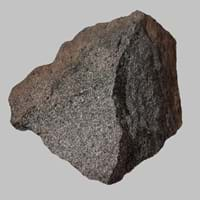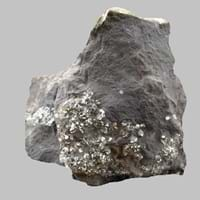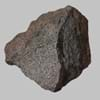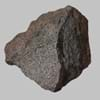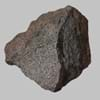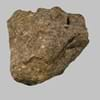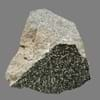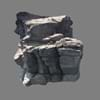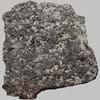Definition
Enderbite rock is an igneous rock which belongs to the Charnockite rock series
Argillites are highly compact sedimentary or slightly metamorphosed rocks that consist largely or wholly of particles of clay or silt but lack the fissility of shale or the cleavage characteristic of slate
Origin
Enderby Land, Antarctica
Unknown
Discoverer
Unknown
Unknown
Etymology
From its occurrence in Enderby Land, Antarctica
From Latin Argilla (clay) and -ite in English which became agrilla+ -ite = Argillite
Class
Igneous Rocks
Sedimentary Rocks
Sub-Class
Durable Rock, Hard Rock
Durable Rock, Soft Rock
Group
Plutonic
Not Applicable
Other Categories
Coarse Grained Rock, Opaque Rock
Fine Grained Rock, Opaque Rock
Texture
Granular
Clastic, Polished
Color
Black, Grey, Orange, Pink, White
Dark Grey to Black, Pink, Red, White
Durability
Durable
Durable
Scratch Resistant
Yes
Yes
Appearance
Veined or Pebbled
Rough and Dull
Interior Uses
Bathrooms, Countertops, Decorative Aggregates, Entryways, Floor Tiles, Homes, Hotels, Kitchens, Stair Treads
Decorative Aggregates, Homes, Interior Decoration
Exterior Uses
As Building Stone, As Facing Stone, Bridges, Paving Stone, Garden Decoration, Office Buildings
As Building Stone, Garden Decoration, Office Buildings
Other Architectural Uses
Curbing
Curbing, Whetstones
Construction Industry
As Dimension Stone
Used for flooring, stair treads, borders and window sills.
Medical Industry
Not Available
Not Available
Antiquity Uses
Artifacts, Monuments, Sculpture, Small Figurines
Artifacts, Monuments, Sculpture
Commercial Uses
Curling, Gemstone, Laboratory bench tops, Tombstones
Fire resistant, Used to manufracture paperweights and bookends
Types
Not Available
Not Available
Features
Available in Lots of Colors and Patterns, It is One of the Oldest, Strongest and Hardest Rock
Is one of the oldest rock
Archaeological Significance
Famous Monuments
Not Available
Not Available
Famous Sculptures
Not Available
Not Available
Pictographs
Not Used
Used
Petroglyphs
Not Used
Used
Formation
Charnockite is an intrusive igneous rock which is very hard and is formed due to weathering of existing rocks.
An argillite is a fine-grained sedimentary rock mainly composed of clay particles which forms from lithified muds which contain variable amounts of silt-sized particles.
Mineral Content
Amphibole, Biotite, Feldspar, Hornblade, Micas, Muscovite or Illite, Olivine, Plagioclase, Pyroxene, Quartz
Biotite, Chlorite, Feldspar, Micas, Muscovite or Illite, Plagioclase, Pyrite, Quartz
Compound Content
Aluminium Oxide, CaO, Iron(III) Oxide, FeO, Potassium Oxide, MgO, MnO, Sodium Oxide, Phosphorus Pentoxide, Silicon Dioxide, Titanium Dioxide
Iron(III) Oxide, Potassium Oxide, MgO, Silicon Dioxide
Types of Metamorphism
Contact Metamorphism, Impact Metamorphism
Not Applicable
Types of Weathering
Biological Weathering, Chemical Weathering
Biological Weathering
Types of Erosion
Glacier Erosion, Sea Erosion, Water Erosion, Wind Erosion
Chemical Erosion
Grain Size
Coarse Grained
Fine Grained
Fracture
Not Available
Conchoidal to Uneven
Streak
White
White to Grey
Porosity
Very Less Porous
Highly Porous
Luster
Not Available
Waxy and Dull
Cleavage
Not Available
Slaty
Toughness
Not Available
2.6
Specific Gravity
Not Available
2.56-2.68
Transparency
Opaque
Opaque
Density
2.6 g/cm3
2.54-2.66 g/cm3
Specific Heat Capacity
Not Available
Resistance
Heat Resistant, Wear Resistant
Heat Resistant, Impact Resistant
Deposits in Eastern Continents
Asia
India
Bangladesh, China, India, Russia
Africa
Not Available
Ethiopia, Kenya, Morocco, South Africa, Tanzania
Europe
Not Available
Austria, France, Germany, Greece, Italy, Romania, Scotland, Spain, Switzerland
Others
Antarctica
Not Available
Deposits in Western Continents
South America
Not Available
Bolivia, Chile, Colombia, Ecuador, Peru, Venezuela
Deposits in Oceania Continent
Australia
Not Available
New South Wales, New Zealand, Queensland, Victoria, Western Australia
All about Enderbite and Argillite Properties
Know all about Enderbite and Argillite properties here. All properties of rocks are important as they define the type of rock and its application. Enderbite belongs to Igneous Rocks while Argillite belongs to Sedimentary Rocks.Texture of Enderbite is Granular whereas that of Argillite is Clastic, Polished. Enderbite appears Veined or Pebbled and Argillite appears Rough and Dull. The luster of Enderbite is not available while that of Argillite is waxy and dull. Enderbite is available in black, grey, orange, pink, white colors whereas Argillite is available in dark grey to black, pink, red, white colors. The commercial uses of Enderbite are curling, gemstone, laboratory bench tops, tombstones and that of Argillite are fire resistant, used to manufracture paperweights and bookends.
